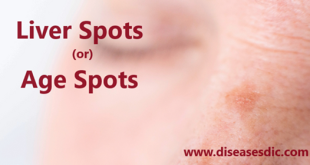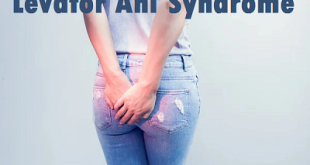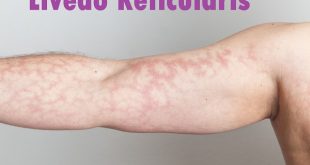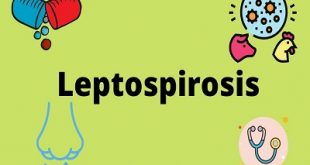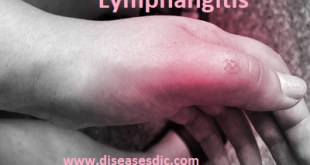Description
Langerhans cell histiocytosis is a disorder in which excess immune system cells called Langerhans cells build up in the body. Langerhans cells, which help regulate the immune system, are normally found throughout the body, especially in the skin, lymph nodes, spleen, lungs, liver, and bone marrow. In Langerhans cell histiocytosis, excess immature Langerhans cells usually form tumors called granulomas. Many researchers now consider Langerhans cell histiocytosis to be a form of cancer, but this classification remains controversial.
In approximately 80 percent of affected individuals, one or more granulomas develop in the bones, causing pain and swelling. The granulomas, which usually occur in the skull or the long bones of the arms or legs, may cause the bone to fracture.
Granulomas also frequently occur in the skin, appearing as blisters, reddish bumps, or rashes which can be mild to severe. The pituitary gland may also be affected; this gland is located at the base of the brain and produces hormones that control many important body functions. Without hormone supplementation, affected individuals may experience delayed or absent puberty or an inability to have children (infertility). In addition, pituitary gland damage may result in the production of excessive amounts of urine (diabetes insipidus) and dysfunction of another gland called the thyroid. Thyroid dysfunction can affect the rate of chemical reactions in the body (metabolism), body temperature, skin and hair texture, and behavior.
Pathophysiology
The pathogenesis of Langerhans cell histiocytosis (LCH) is unknown. It has been debated whether LCH is a reactive or neoplastic process, although the latter is now more commonly accepted. Arguments supporting the reactive nature of LCH include the occurrence of spontaneous remissions, the extensive elaboration of multiple cytokines by dendritic cells and T-cells (the so-called cytokine storm) in LCH lesions, and the good survival rate in patients without organ dysfunction. [6] Furthermore, a rigorous investigation of potential chromosomal aberrations in LCH via analysis of ploidy, karyotype, single-nucleotide polymorphism arrays, and array-based comparative genomic hybridization did not reveal consistent abnormalities; these findings were considered to support the idea of LCH as a reactive process.
Causes
We don’t know all the reasons why some people get LCH. About half of the people with the disorder have a faulty gene that makes the Langerhans immune cells grow out of control. That genetic mutation happens after birth, which means you usually won’t get LCH from your parents.
Researchers suspect that other things may also play a role:
- Smoking
- Parents who were exposed to environmental toxins, like benzene or wood dust
- Infections as a newborn
- Family history of thyroid disease
Risk Factors
Most adults with LCH have a history of smoking, and roughly two-third of these patients have a form of this disease that only lodges in the lung.
Other risk factors for LCH include:
- A parent who was exposed to certain chemicals, such as benzene
- A history of infections as a newborn
- A family history of thyroid disease
- Mutations in the BRAF gene
LCH-related BRAF mutations are acquired over the course of a lifetime, not inherited, and are only present in the abnormal cells. The BRAF gene provides instructions for making a protein related to control cell growth and development. When this protein becomes overactive, it may cause the Langerhans cells to grow and divide uncontrollably. Viral infections, environmental toxins, and changes in other genes may also play a role in the development of this complex disorder.
Symptoms of Langerhans cell histiocytosis
Langerhans cell histiocytosis (LCH) may be limited to only one part of the body, such as a bone, or it can involve many organs. The disease may be more serious in young infants or if “risk” organs such as liver, spleen, or bone marrow are involved. When LCH affects certain bones in the skull, the patients can be at higher risk of developing diabetes insipidus and/or neurological complications.
The following symptoms may indicate disease involvement but are not necessarily diagnostic of LCH. This disease varies greatly from patient to patient, and some but not all of these symptoms may be present.
- Skin: Scaly, waxy rash or lesions, hair loss, diaper rash, oozing, tenderness.
- Bones/Single or Multiple Sites (skull, bones around eyes, back bones, extremities, ribs, pelvis, feet/toes/fingernails/hands/fingers). Bone pain, lumps, headaches, fracture, limp, inability to walk, collapse of disc.
- Bone Marrow: Low blood counts (red blood cells, white blood cells, and platelets/clotting cells), increased infections, easy bruising.
- Gastrointestinal Tract (stomach/intestines/colon): Abdominal pain, yellow skin, vomiting, diarrhea, blood in stool, weight loss, bleeding from the throat, child’s growth falls below the standard expectation.
- Liver/Spleen: Enlarged liver, swelling of abdomen, pain, abnormal liver blood tests.
- Endocrine System (pituitary gland/diabetes insipidus, hypothalamus, thyroid gland) Excessive thirst, excessive urination, dehydration, fatigue, sweats, temperature changes, weight gain, weight loss, and short stature/growth failure, early or delayed/absent puberty.
- Lung: Chest pain, shortness of breath, difficulty breathing, collapsed lung, cough, weight loss, fatigue, coughing up blood.
- Brain/Central Nervous System: Diabetes insipidus, headaches, dizziness, seizures, blurred vision or loss of vision, difficulty walking, abnormal protrusion of eyeballs, difficulty swallowing or speaking, behavior changes, hot flashes, temperature variations, vomiting.
- Mouth/Jaw/Gums: Pain and swelling of face, loosening or loss of teeth, “floating” teeth, mouth ulcers, swollen or bleeding gums, swollen lymph nodes in neck.
- Ears: Loss of hearing, discharge from ear canal, redness, cysts.
- Eyes: Difficulty seeing, bulging of eyeballs.
- Lymph Nodes (neck, groin, armpits): Enlargement, tenderness. If the enlargement surrounds the respiratory area, it can result in cough, dyspnea, or turning blue.
- Ovaries: Pelvic pain, change in menstrual cycle.
What are possible complications of Langerhans cell histiocytosis in a child?
Langerhans cell histiocytosis can cause damage to tissues and organs all over the body if it’s not treated. One example is pulmonary histiocytosis. This condition damages the lungs. Damage to the body can be so severe that the condition becomes fatal. Other complications may include:
- Pituitary gland problems
- Growth problems. This includes delayed growth.
- Anemia
- Lung failure
Diagnosis and Test
Tests that examine the organs and body systems where LCH may occur are used to detect (find) and diagnose LCH. The following tests and procedures may be used to diagnose LCH or conditions caused by LCH:
Physical exam and health history: An exam of the body to check general signs of health, including checking for signs of disease, such as lumps or anything else that seems unusual. A history of the patient’s health habits and past illnesses and treatments will also be taken.
Neurological exam: A series of questions and tests to check the brain, spinal cord, and nerve function. The exam checks a person’s mental status, coordination, and ability to walk normally, and how well the muscles, senses, and reflexes work. This may also be called a neuro exam or a neurologic exam.
Complete blood count (CBC) with differential: A procedure in which a sample of blood is drawn and checked for the following:
- The amount of hemoglobin (the protein that carries oxygen) in the red blood cells.
- The portion of the blood sample made up of red blood cells.
- The number and type of white blood cells.
- The number of red blood cells and platelets.
Blood chemistry studies: A procedure in which a blood sample is checked to measure the amounts of certain substances released into the body by organs and tissues in the body. An unusual (higher or lower than normal) amount of a substance can be a sign of disease.
Liver function test: A blood test to measure the blood levels of certain substances released by the liver. A high or low level of these substances can be a sign of disease in the liver.
BRAF gene testing: A laboratory test in which a sample of blood or tissue is tested for certain changes in the BRAF gene.
Urinalysis: A test to check the color of urine and its contents, such as sugar, protein, red blood cells, and white blood cells.
Water deprivation test: A test to check how much urine is made and whether it becomes concentrated when little or no water is given. This test is used to diagnose diabetes insipidus, which may be caused by LCH.
Bone marrow aspiration and biopsy: The removal of bone marrow and a small piece of bone by inserting a hollow needle into the hipbone. A pathologist views the bone marrow and bone under a microscope to look for signs of LCH.
The following tests may be done on the tissue that was removed:
- Immunohistochemistry: A laboratory test that uses antibodies to check for certain antigens (markers) in a sample of a patient’s tissue. The antibodies are usually linked to an enzyme or a fluorescent dye. After the antibodies bind to a specific antigen in the tissue sample, the enzyme or dye is activated, and the antigen can then be seen under a microscope.
- Flow cytometry: A laboratory test that measures the number of cells in a sample, the percentage of live cells in a sample, and certain characteristics of the cells, such as size, shape, and the presence of tumor (or other) markers on the cell surface.
Bone scan: A procedure to check if there are rapidly dividing cells in the bone. A very small amount of radioactive material is injected into a vein and travels through the bloodstream. The radioactive material collects in the bones with LCH and is detected by a scanner.
X-ray: An x-ray of the organs and bones inside the body. An x-ray is a type of energy beam that can go through the body and onto film, making a picture of areas inside the body. Sometimes a skeletal survey is done. This is a procedure to x-ray all the bones in the body.
CT scan (CAT scan): A procedure that makes a series of detailed pictures of areas inside the body, taken from different angles. The pictures are made by a computer linked to an x-ray machine. A dye may be injected into a vein or swallowed to help the organs or tissues show up more clearly. This procedure is also called computed tomography, computerized tomography, or computerized axial tomography.
MRI (magnetic resonance imaging): A procedure that uses a magnet, radio waves, and a computer to make a series of detailed pictures of areas inside the body. A substance called gadolinium may be injected into a vein. The gadolinium collects around the LCH cells so that they show up brighter in the picture. This procedure is also called nuclear magnetic resonance imaging (NMRI).
PET scan (positron emission tomography scan): A procedure to find tumor cells in the body. A small amount of radioactive glucose (sugar) is injected into a vein. The PET scanner rotates around the body and makes a picture of where glucose is being used in the body. Tumor cells show up brighter in the picture because they are more active and take up more glucose than normal cells do.
Ultrasound exam: A procedure in which high-energy sound waves (ultrasound) are bounced off internal tissues or organs and make echoes. The echoes form a picture of body tissues called a sonogram. The picture can be printed to be looked at later.
Pulmonary function test (PFT): A test to see how well the lungs are working. It measures how much air the lungs can hold and how quickly air moves into and out of the lungs. It also measures how much oxygen is used and how much carbon dioxide is given off during breathing. This is also called lung function test.
Bronchoscopy: A procedure to look inside the trachea and large airways in the lung for abnormal areas. A bronchoscope is inserted through the nose or mouth into the trachea and lungs. A bronchoscope is a thin, tube-like instrument with a light and a lens for viewing. It may also have a tool to remove tissue samples, which are checked under a microscope for signs of LCH.
Endoscopy: A procedure to look at organs and tissues inside the body to check for abnormal areas in the gastrointestinal tract or lungs. An endoscope is inserted through an incision (cut) in the skin or opening in the body, such as the mouth. An endoscope is a thin, tube-like instrument with a light and a lens for viewing. It may also have a tool to remove tissue or lymph node samples, which are checked under a microscope for signs of disease.
Biopsy: The removal of cells or tissues so they can be viewed under a microscope by a pathologist to check for LCH cells. To diagnose LCH, a biopsy of bone, skin, lymph nodes, liver, or other sites of disease may be done.
Treatments for Langerhans cell histiocytosis
The severity of LCH varies widely. For many patients, the disorder eventually resolves with appropriate treatment. When only the skin is affected, this condition may disappear on its own. However, some complications may be long-lasting, resulting in tissue and organ damage.
Adults currently receive the treatments proven effective for children, though it is not currently known whether they respond as well.
Isolated skin conditions may be treated by drugs and chemotherapy, including:
- Topical steroids (although these creams are effective for a small number of patients)
- Chemotherapy agents, including oral methotrexate and mercaptopurine, and intravenous chemotherapies, including vinblastine or cladribine
- Topical application of nitrogen mustard for cutaneous LCH that is resistant to oral therapies (not used for disease involving large areas of skin)
- Psoralen and long-wave ultraviolet radiation (PUVA)
Other forms of LCH may be treated by a combination of surgery, radiation therapy and chemotherapy.
Surgery
- Curettage (the removal of tissue). LCH bone lesions may not need complete excision, as this only increases healing time and the risk of long-term complications.
- Bracing or spinal fusion may be needed for unstable cervical vertebrae.
Radiation Therapy
- May be used for bone lesions of the vertebrae or femoral neck, if they are at risk of collapse or fracture.
Chemotherapy
- Vinblastine, a chemotherapy drug, may be combined with prednisone
- Methotrexate, a chemotherapy drug
- Mercaptopurine, a chemotherapy drug
- Cladribine, a chemotherapy drug
- Zoledronate, a drug that strengthens bones
Vemurafemib (Zelboraf) is a medicine that targets BRAF and has worked in some patients.
Can Langerhans cell histiocytosis be prevented in a child?
- Experts don’t know what causes Langerhans cell histiocytosis. So there is no known way to prevent the condition. Having a family history of thyroid disease may increase the risk.
- Some other factors can increase your child’s risk of developing the condition. Limit your exposure to certain chemicals, including benzene.
 Diseases Treatments Dictionary This is complete solution to read all diseases treatments Which covers Prevention, Causes, Symptoms, Medical Terms, Drugs, Prescription, Natural Remedies with cures and Treatments. Most of the common diseases were listed in names, split with categories.
Diseases Treatments Dictionary This is complete solution to read all diseases treatments Which covers Prevention, Causes, Symptoms, Medical Terms, Drugs, Prescription, Natural Remedies with cures and Treatments. Most of the common diseases were listed in names, split with categories.

